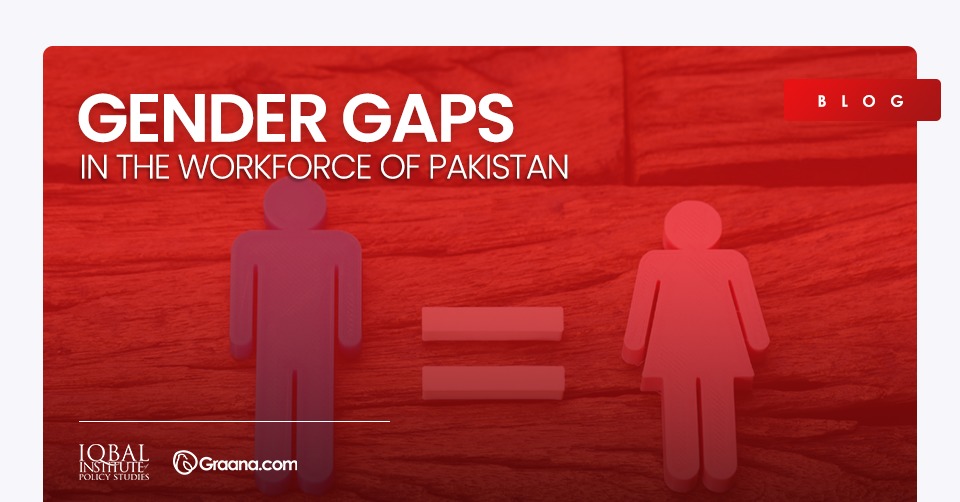Gender equality is vital for peaceful societies with viable human potential and sustainable development. Women constitute half of the world’s population and, thus, half of its potential (UN, 2020).
However, this indicator conceals the reality of millions of women who are unable to participate in the labour market. The workplace is often inhospitable for women because of the numerous forms of gender inequality present, manifesting itself in the form of unequal pay, disparities in promotions, incidents of sexual harassment, lack of leadership and racism. It contributes to women’s lower socioeconomic status.
Also, in developing nations, most women cannot join the workforce due to childcare obligations, lack of employment that meets their needs for fair treatment, high-quality work, and equal pay, or they want to avoid being segregated into the conventional “women’s” sectors.
Therefore, tremendous work must be done to close the gender gap in the workplace. Governments must adopt intelligent policies that drive gender equality in all socioeconomic sectors to achieve greater national productivity, better economic growth, and improved organisational performance.
The Situation in Pakistan
Pakistan has one of the lowest female labour-force participation rates in Asia. According to the Global Gender Gap report 2022, Pakistan is the second-worst country in terms of gender parity, ranking 145th out of 146 nations (World Economic Forum, 2022).
Cultural and social norms surrounding women’s domestic responsibilities, commute outside the home, and interactions with unrelated men set up multiple barriers for women who want to work.
According to estimates, women account for roughly 90% of the bottom 1% of the labour force (Javed, et al., 2022). Most women work in agriculture and a large labour supply, contributing to their low wages. Women comprise only 10% of non-agricultural workers in the formal private sector (DAWN, 2022).
Additionally, the gender wage gap in the country is estimated to be 34%, much higher than the global average of 23% (Javed, et al., 2022). Moreover, women account for only 4.5% of Pakistan’s senior, managerial, and legislative positions (Ahmed, 2022).
While educated women struggle to enter and maintain employment, women with low educational backgrounds face even more barriers. Low literacy levels, mobility challenges, and gender norms prevent women from entering and remaining in the formal labour force.
As a result, a sizable proportion of women work in the informal sector as home-based workers. For instance, Pakistan has 4.4 million home-based workers, 3.6 million women (DAWN, 2022). These home-based workers are vulnerable to exploitation by contractors or middlemen because they typically come from poorer families with little to no formal education.
They have limited access to markets, training, government services and workplace amenities. Also, they have fewer rights and social protection, face more hazards at work, and are given little to no consideration in economic and labour policies.
Furthermore, many women abandon their education due to safety concerns or financial constraints, while others fear facing opposition from family and communities if they work outside the home.
Women nearly make up half of the country’s population (DAWN, 2023) and have the potential to drive positive change, progress, and prosperity at the household, community, and country levels.
According to policymakers, to meet Pakistan’s growth targets, the country’s female labour force participation rate must reach at least 45% of the total labour force (Javed, et al., 2022).
Therefore, the government and businesses must make two sets of efforts: targeted policies to encourage women’s return to the workforce and talent development for women in future industries. Otherwise, there is a risk of permanently eroding previous decades’ gains and missing out on future economic returns from diversity.
Graana.com, in collaboration with the Iqbal Institute of Policy Studies, discusses the gender gaps in the workforce of Pakistan.
What are the Barriers?
Social Norms
Gender norms in Pakistani society remain regressive. According to the 2019 Pakistan Social and Living Standards Measurement (PSLM) survey, 40% of women require permission from a family member to seek or continue paid employment (Minardi, Akmal, Crawfurd, & Hares, 2021). Many men forbid women from leaving the house; if they do, they are accompanied to keep an eye on their behaviour and preserve their honour. Women, therefore, look for work that can be done from home. Traditional honour codes also have an impact on job selection and create barriers to jobs that are not socially acceptable. According to a survey, 43% of men think women should not work outside of the house, whereas 80% of women think they should be allowed to work, and 69% think women can do all of the same jobs as men (Minardi, Akmal, Crawfurd, & Hares, 2021).
Low Literacy Rate
Another significant barrier to women working is a lack of education. In Pakistan, 49% of women are literate, compared to 71% of men (Agha, 2022). This restricts women’s access to jobs, even in more socially acceptable fields like education or health care in the public sector. Moreover, Pakistan’s entire educational system has a 13% enrollment gender gap. Only 46.5% of women are literate, 61.6 % completed elementary school, 34.2 % completed high school, and 8.3 % completed tertiary education (Kamal, 2022). As a result, women account for most of our unskilled labour force. Very few women pursue higher education, are trained in their fields, and hold positions at the top of the social ladder.
Safety Deficit in Transit
The threat of sexual harassment places many limitations on women. In Pakistan, women seldom ride bicycles or motorcycles and consider riding alone in rickshaws and cabs unsafe. Restricted mobility, to a great extent because of harassment, prevents women from continuing their education or seeking work outside the home. For instance, 30% of women in Peshawar claim to have been sexually harassed when leaving the house (Rahman & Redaelli, 2021). According to an Asian Development Bank study on women using public transportation in Karachi, 85% of working women, 82% of students, and 67% of stay-at-home moms experienced sexual harassment (Tabassum & Suhail, 2022).
Lack of Information and Awareness
Lack of knowledge about employment hinders female labour force participation (FLFP). Most women who are unemployed do not understand how the labour market works, how to look for jobs or the awareness of jobs that provide decent earnings. 41% of men look for jobs using multiple search methods compared to 29% of women (Xu, Jain, Khan, & Vyborny, 2021). FLFP could increase from 13.4 to 20.4% if knowledge constraints could be eliminated (Rahman & Redaelli, 2021).
Household Constraints and Attitudes
Men have minimal to no participation in household activities, child care, and production of services for family use, whether employed or unemployed. Women spend an average of 5.3 hours daily on such activities, decreasing only if employed (Rahman & Redaelli, 2021). This inhibits women’s ability to work outside the home. For instance, 83% of unemployed women cite household responsibilities as their primary excuse for not working.
Moreover, women’s work is generally stigmatised in Pakistan. Working women are not considered respectable in many social contexts. Compared to rural women, urban women are more supportive of working women. Another crucial element is the lack of networks and support groups for women, which can aid them in locating mentors and better employment opportunities.
The Way Forward
- Providing working women with safe and secure transportation options through employer-led initiatives involving public-private partnerships.
- Government policies towards introducing gender-sensitive infrastructure, maternity policies, regular work hours and creating women-friendly workplaces.
- Expand vocational training for women.
- Regularise the informal economy, especially in rural areas where women make a significant but unnoticed economic contribution.
- Promotion of women empowerment and women-specific economic opportunities via media.
- Adoption of gender-sensitive policies and closure of gender gaps in earning in all workplaces.
- Investments in human capital for access to resources and opportunities extended to both genders.
- Provision of schools for girls at a local level.
- Encourage businesswomen to participate actively in e-commerce through entrepreneurship.
Conclusion
Everyone is entitled to equal rights. Nonetheless, gender discrimination and gaps continue to deny women and girls their rights and opportunities in the workplaces of Pakistan.
This negatively impacts the social productivity of communities and impairs the country’s economic development. Therefore, the government must take effective measures that foster the closure of gender gaps in all socioeconomic sectors.
Moreover, education and awareness programs and initiatives regarding women’s role in the growth of a country shall be promoted at all levels. This will enhance the country’s efficiency and improve national productivity.




